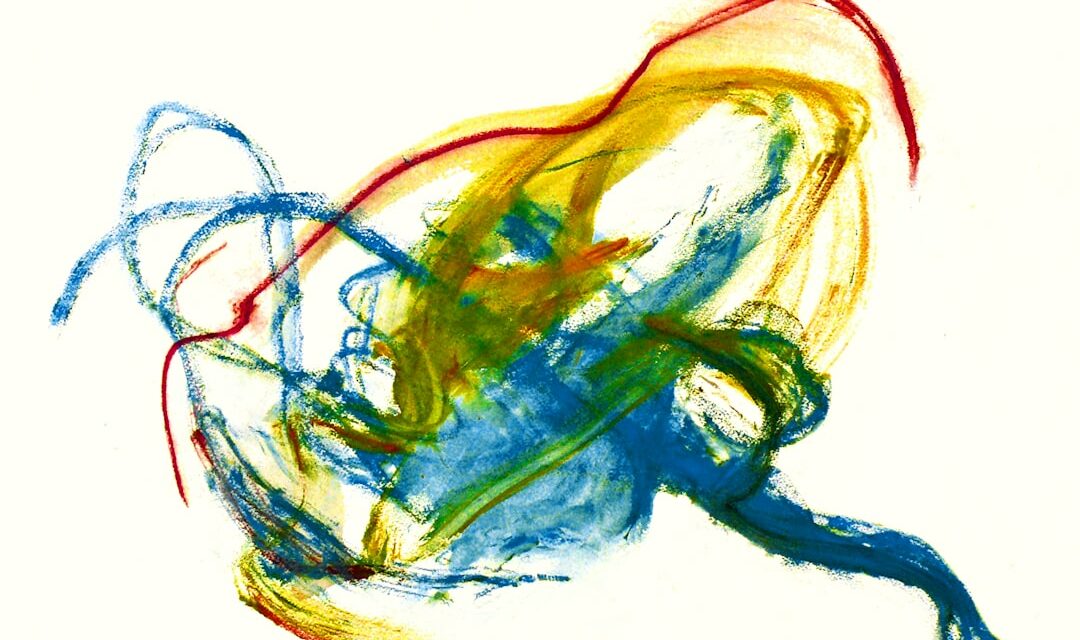Postmodernism in art emerged in the mid-20th century as a response to the modernist movement that had dominated the art world for much of the 19th and early 20th centuries. This movement is characterised by its rejection of traditional artistic conventions and its embrace of diversity, complexity and contradiction. Postmodernism challenges the notion of a single, universal truth and instead celebrates the plurality of perspectives and experiences.
Postmodern art is often distinguished by its use of pastiche, irony and self-referentiality, as well as its willingness to engage with popular culture and mass media. Postmodernism in art can be viewed as a reaction against the rigid formalism and idealism of modernist art. Whilst modernist art sought to create timeless, universal truths through its emphasis on purity, simplicity and abstraction, postmodern art embraces the messiness and complexity of contemporary life.
It rejects the idea of a single, authoritative narrative in favour of multiple, overlapping narratives that reflect the diversity of human experience. Postmodern art is often playful, irreverent and subversive, challenging the viewer to question their assumptions and expectations. It is a movement that celebrates the hybridity and fluidity of contemporary culture, drawing on a wide range of influences and sources to create works that are dynamic, unpredictable and constantly evolving.
Summary
- Postmodernism in art is a movement that challenges traditional norms and embraces diversity, complexity, and contradiction.
- Characteristics of postmodern art include the use of appropriation, pastiche, irony, and fragmentation to create new and innovative works.
- Influential postmodern artists include Cindy Sherman, Barbara Kruger, and Jeff Koons, who have pushed the boundaries of art and challenged societal norms.
- Postmodern art has had a significant impact on society by questioning power structures, consumer culture, and the concept of originality in art.
- Postmodern art can be expressed in various mediums such as painting, sculpture, photography, performance art, and digital media, allowing for diverse and experimental forms of expression.
Characteristics of Postmodern Art
Pastiche and Intertextuality
One of the most notable characteristics of postmodern art is its use of pastiche, which involves borrowing elements from a wide range of sources and combining them in new and unexpected ways. This can include references to popular culture, historical art movements, or other artists’ work. Pastiche is often used to create works that are ironic or self-referential, challenging the idea of originality and authenticity in art.
Fragmentation and Deconstruction
Another characteristic of postmodern art is its emphasis on fragmentation and deconstruction. Postmodern artists often break down traditional artistic forms and conventions, creating works that are fragmented, disjointed, and open-ended. This can involve the use of collage, montage, or assemblage techniques, as well as the incorporation of found objects or materials. By breaking down traditional boundaries and categories, postmodern art seeks to challenge the viewer’s expectations and encourage them to think critically about the nature of art and representation.
Challenging Dominant Narratives
Postmodern art also often engages with issues of identity, power, and representation. Many postmodern artists explore themes related to gender, race, sexuality, and class, using their work to challenge dominant narratives and give voice to marginalised perspectives. This can involve the use of irony, parody, or satire to critique social norms and power structures. Postmodern art is often politically engaged, seeking to disrupt established hierarchies and create space for alternative voices and experiences.
Influential Postmodern Artists
There have been many influential artists who have contributed to the development of postmodern art. One of the most well-known figures in postmodern art is the American artist Cindy Sherman. Sherman is known for her photographic self-portraits in which she adopts various personas and explores themes of identity, gender, and representation.
Her work challenges traditional notions of beauty and femininity, using irony and parody to critique the ways in which women are depicted in popular culture. Another influential postmodern artist is the British duo Gilbert & George. Known for their provocative and confrontational work, Gilbert & George use photography, performance, and video to explore themes of sexuality, religion, and social norms.
Their work often incorporates religious iconography and references to popular culture, challenging the viewer to confront their own prejudices and assumptions. The American artist Barbara Kruger is also considered a key figure in postmodern art. Kruger is known for her bold, text-based works that critique consumerism, mass media, and gender stereotypes.
Her work often features provocative slogans and phrases overlaid on images taken from popular culture, creating a powerful commentary on the ways in which power operates in contemporary society.
Impact of Postmodern Art on Society
Postmodern art has had a significant impact on society, challenging traditional notions of art and representation and opening up new possibilities for creative expression. One of the key impacts of postmodern art has been its role in expanding the boundaries of what is considered art. By embracing a wide range of influences and sources, postmodern art has challenged the idea of a single, authoritative canon and created space for diverse voices and perspectives.
Postmodern art has also had a profound impact on popular culture, influencing everything from fashion and design to advertising and film. The playful, irreverent spirit of postmodern art has permeated contemporary culture, leading to a greater emphasis on irony, pastiche, and self-referentiality in a wide range of creative fields. Postmodern art has also played a key role in challenging dominant narratives and giving voice to marginalized perspectives, contributing to a greater awareness of issues related to identity, power, and representation.
In addition, postmodern art has had a significant impact on the way we understand history and memory. By embracing fragmentation and deconstruction, postmodern art has challenged traditional notions of linear progress and universal truth, encouraging a more nuanced understanding of the past. Postmodern art has also raised important questions about the nature of authenticity and originality in an age of mass reproduction and digital technology, leading to new ways of thinking about authorship and ownership in the creative industries.
Postmodern Art in Different Mediums
Postmodern art encompasses a wide range of mediums and practices, reflecting its embrace of diversity and hybridity. One of the most prominent mediums in postmodern art is photography. Many postmodern artists have used photography to explore themes related to identity, representation, and power.
Photography allows artists to engage with issues related to mass media and popular culture, as well as to challenge traditional notions of beauty and authenticity. Another important medium in postmodern art is installation. Installation art involves creating immersive environments that engage the viewer’s senses and emotions.
Postmodern artists often use installation to challenge traditional notions of space and time, creating works that are fragmented, disorienting, or open-ended. Installation art can incorporate a wide range of materials and techniques, from found objects to digital technology, reflecting the hybridity and fluidity of contemporary culture. Performance art is also an important medium in postmodern art.
Performance artists use their bodies as a site for creative expression, often engaging with issues related to gender, race, sexuality, and power. Performance art can be confrontational or provocative, challenging the viewer’s assumptions and expectations. It can also be ephemeral or site-specific, reflecting the transient nature of contemporary life.
Criticisms and Controversies Surrounding Postmodern Art

The Critique of Self-Reference and Inaccessibility
One common criticism of postmodern art is that it can be overly self-referential and inaccessible to a wider audience. Some argue that postmodern art’s emphasis on irony and pastiche can lead to works that are overly intellectual or detached from everyday experience.
Challenging Traditional Conventions
Postmodern art has also been criticised for its rejection of traditional artistic conventions and its embrace of fragmentation and deconstruction. Some argue that postmodern art’s emphasis on complexity can lead to works that are chaotic or lacking in coherence. Others have raised concerns about postmodern art’s engagement with issues related to identity and power, arguing that it can sometimes lead to works that are overly didactic or polemical.
Engaging with Popular Culture and Mass Media
In addition, postmodern art has been the subject of controversy due to its engagement with popular culture and mass media. Some argue that postmodern art’s embrace of popular culture can lead to works that are superficial or lacking in depth. Others have raised concerns about postmodern art’s use of appropriation and pastiche, arguing that it can sometimes lead to works that are derivative or unoriginal.
The Future of Postmodern Art
The future of postmodern art is likely to be shaped by ongoing developments in technology, globalisation, and social change. As digital technology continues to transform the way we create and consume culture, postmodern artists are likely to continue exploring new ways of engaging with issues related to mass media and popular culture. The rise of social media and digital platforms has also created new opportunities for artists to reach wider audiences and engage with diverse communities.
Globalisation is also likely to have a significant impact on the future of postmodern art. As artists continue to draw on a wide range of influences and sources from around the world, postmodern art is likely to become even more diverse and hybrid. The increasing interconnectedness of global culture is likely to lead to new forms of creative expression that challenge traditional boundaries and categories.
In addition, ongoing social change is likely to shape the future of postmodern art. As artists continue to engage with issues related to identity, power, and representation, postmodern art is likely to play an important role in shaping public discourse around these issues. The growing awareness of social inequality and environmental crisis is likely to lead to new forms of politically engaged art that challenge dominant narratives and advocate for social change.
In conclusion, postmodern art is a dynamic and diverse movement that continues to shape contemporary culture in profound ways. By challenging traditional notions of art and representation, postmodern art has opened up new possibilities for creative expression and contributed to a greater awareness of issues related to identity, power, and representation. As we look towards the future, it is clear that postmodern art will continue to play an important role in shaping public discourse and challenging established norms.
If you are interested in learning more about the evolution of art, you may want to check out this article on Post-Impressionism. This movement, which followed Impressionism, was characterised by artists such as Vincent van Gogh and Paul Cézanne who sought to express emotion and symbolism in their work. Understanding the development of Post-Impressionism can provide valuable context for appreciating the complexities of postmodern art.
FAQs
What is Postmodern Art?
Postmodern art is a movement that emerged in the mid-20th century, characterized by a rejection of traditional artistic conventions and a focus on challenging the boundaries of art. It encompasses a wide range of styles and techniques, often incorporating elements of popular culture, technology, and diverse cultural influences.
What are the key characteristics of Postmodern Art?
Key characteristics of Postmodern Art include a rejection of traditional artistic boundaries, a focus on deconstruction and recontextualization, an emphasis on irony and parody, and a celebration of diversity and multiculturalism. Postmodern artists often incorporate elements of mass media, consumerism, and technology into their work.
Who are some notable Postmodern artists?
Notable Postmodern artists include Jean-Michel Basquiat, Cindy Sherman, Barbara Kruger, Jeff Koons, and Damien Hirst, among others. These artists have made significant contributions to the Postmodern movement through their innovative and boundary-pushing work.
How does Postmodern Art differ from Modern Art?
Postmodern Art differs from Modern Art in its rejection of the idea of progress and the belief in a singular artistic truth. While Modern Art sought to break away from traditional artistic conventions and explore new forms of expression, Postmodern Art takes this rejection further by embracing a more fragmented, diverse, and often contradictory approach to art-making.
What are some common themes in Postmodern Art?
Common themes in Postmodern Art include the blurring of boundaries between high and low culture, the critique of consumerism and mass media, the exploration of identity and representation, and the questioning of established power structures. Postmodern artists often engage with these themes through a variety of mediums, including painting, sculpture, photography, and installation art.




